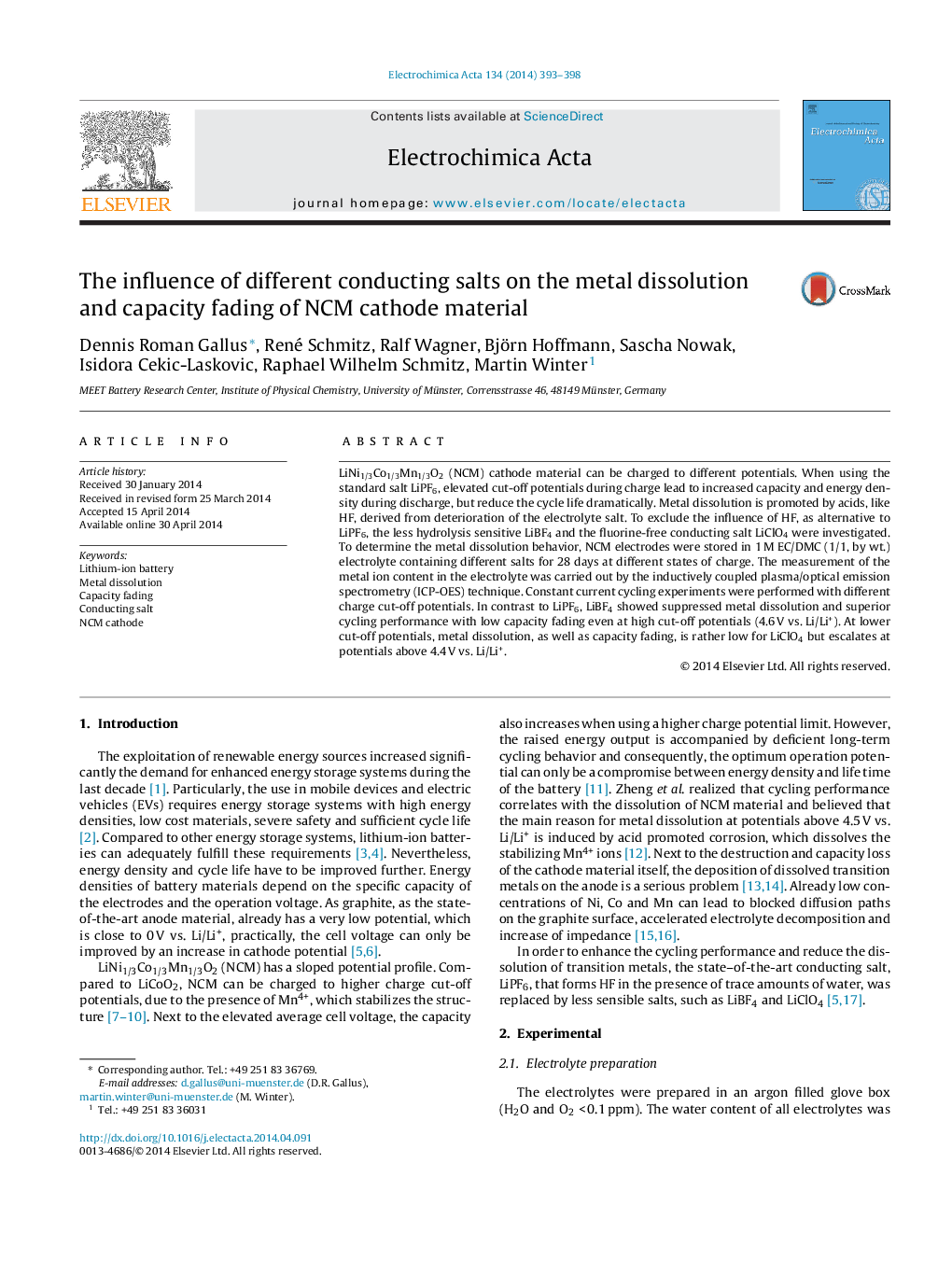| Article ID | Journal | Published Year | Pages | File Type |
|---|---|---|---|---|
| 185687 | Electrochimica Acta | 2014 | 6 Pages |
LiNi1/3Co1/3Mn1/3O2 (NCM) cathode material can be charged to different potentials. When using the standard salt LiPF6, elevated cut-off potentials during charge lead to increased capacity and energy density during discharge, but reduce the cycle life dramatically. Metal dissolution is promoted by acids, like HF, derived from deterioration of the electrolyte salt. To exclude the influence of HF, as alternative to LiPF6, the less hydrolysis sensitive LiBF4 and the fluorine-free conducting salt LiClO4 were investigated. To determine the metal dissolution behavior, NCM electrodes were stored in 1 M EC/DMC (1/1, by wt.) electrolyte containing different salts for 28 days at different states of charge. The measurement of the metal ion content in the electrolyte was carried out by the inductively coupled plasma/optical emission spectrometry (ICP-OES) technique. Constant current cycling experiments were performed with different charge cut-off potentials. In contrast to LiPF6, LiBF4 showed suppressed metal dissolution and superior cycling performance with low capacity fading even at high cut-off potentials (4.6 V vs. Li/Li+). At lower cut-off potentials, metal dissolution, as well as capacity fading, is rather low for LiClO4 but escalates at potentials above 4.4 V vs. Li/Li+.
